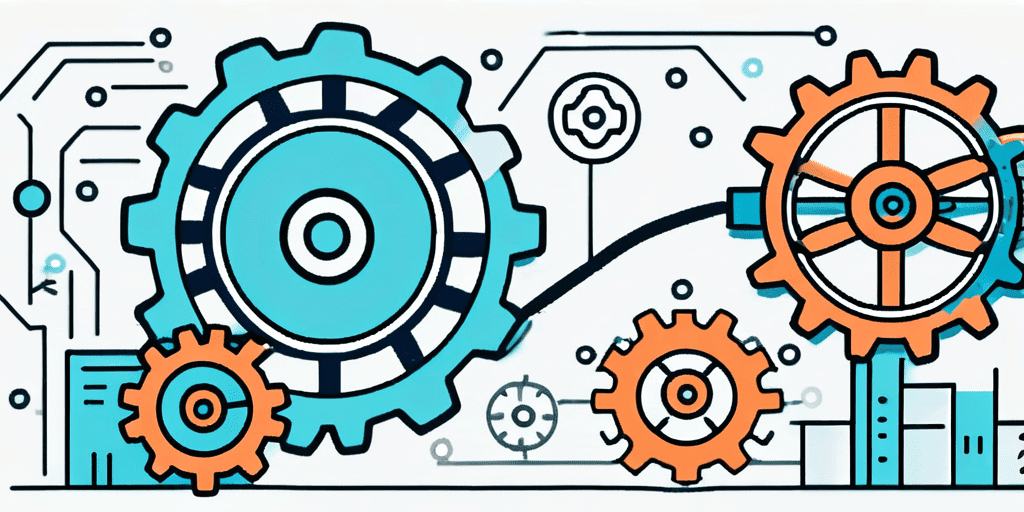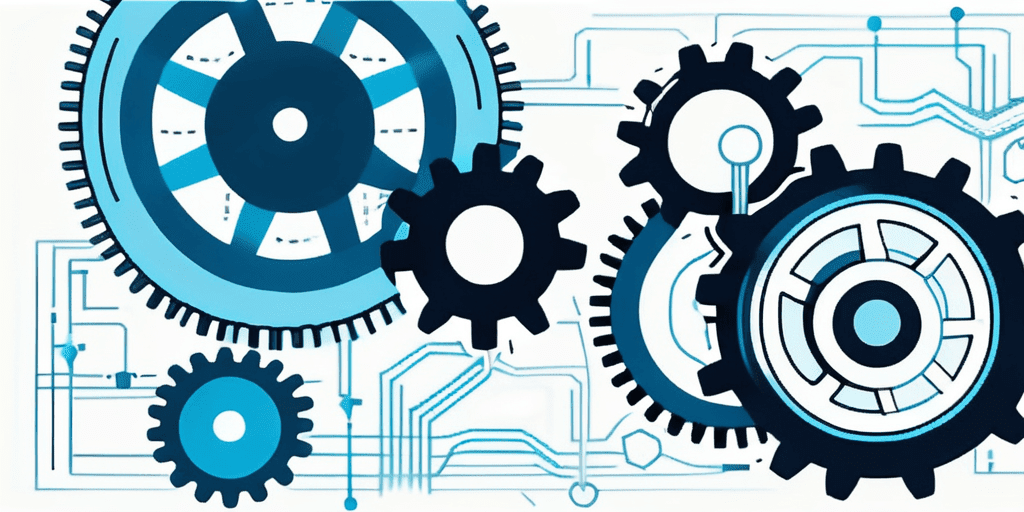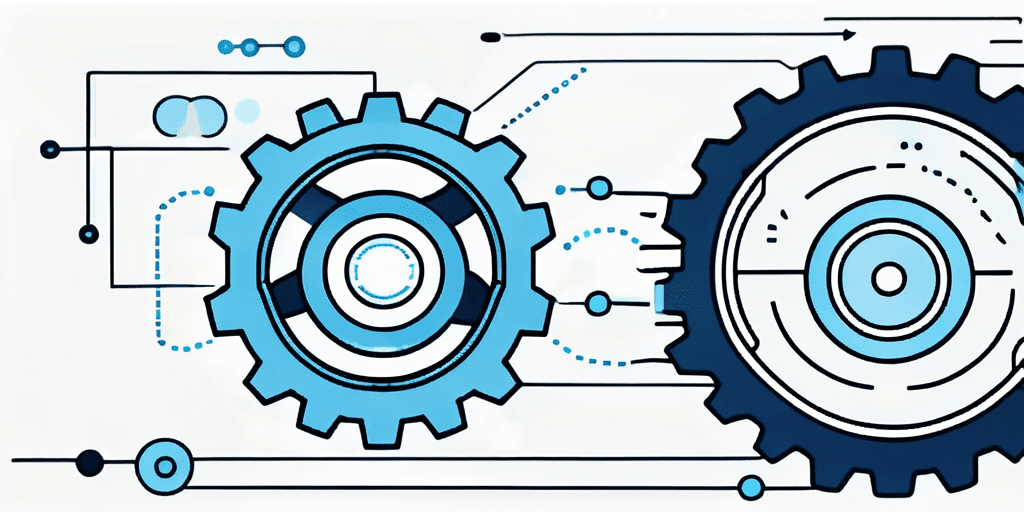In today’s rapidly advancing technological landscape, two terms that often dominate the conversation are Machine Learning (ML) and Artificial Intelligence (AI). These buzzwords are frequently used interchangeably, leading to confusion and misconceptions about their true nature and relationship. In this article, we will delve into the depths of ML and AI, their distinctive features, and the way they complement one another to shape the future of innovation.
Defining Machine Learning (ML)
Let’s start by dissecting the concept of Machine Learning. At its core, ML is a branch of artificial intelligence that focuses on enabling computer systems to learn and improve from experience without being explicitly programmed. It involves the creation of algorithms and models that can be trained to recognize patterns, make predictions, and make data-driven decisions.

The Basics of Machine Learning
At the heart of ML lies a set of fundamental principles. One such principle is supervised learning, where an algorithm is trained on labeled data, allowing it to recognize patterns and make accurate predictions when presented with new, unseen data. Unsupervised learning, on the other hand, involves feeding an algorithm with unlabeled data, enabling it to extract intrinsic patterns and structures from the data on its own.
Among the many techniques used in ML, deep learning has gained significant attention in recent years. Deep learning involves training artificial neural networks with multiple layers to learn hierarchical representations of data, enabling them to perform complex tasks such as image recognition, natural language processing, and even autonomous driving.
Key Concepts in Machine Learning
To comprehend the power and potential of ML, it is crucial to familiarize ourselves with some key concepts. One such concept is the importance of training data quality and size. ML models require large amounts of high-quality data to achieve reliable results. This is where some of the most notable companies in the field, such as Google, Facebook, and Amazon, have excelled by collecting massive datasets.
Another vital concept is model evaluation and optimization. ML models need to be rigorously evaluated to ensure their accuracy, precision, and recall. This iterative process involves tweaking the models’ parameters and hyperparameters to achieve the desired performance. Companies like Netflix, with their renowned recommendation system, leverage ML to optimize user experience and personalize content recommendations.
The Role of ML in Technology
ML plays a pivotal role in shaping various sectors of technology. For instance, in the healthcare industry, ML algorithms can analyze medical records and imaging data to detect anomalies and assist in diagnosis. Companies like IBM Watson Health have developed ML-powered platforms that can aid in identifying potential diseases with remarkable accuracy.
In the field of finance, ML algorithms are used for fraud detection, risk assessment, and algorithmic trading. The prominent financial services company, JP Morgan, utilizes ML to predict market movements and make intelligent investment decisions. This innovative application of ML technology highlights its immense potential for revolutionizing traditional industries.
Moreover, ML is also making significant contributions to the field of transportation. Self-driving cars, for example, rely heavily on ML algorithms to perceive the environment, make decisions, and navigate safely. Companies like Tesla are at the forefront of this technology, continuously improving their autonomous driving systems using ML.
Furthermore, ML is transforming the world of e-commerce. Online retailers like Amazon and Alibaba utilize ML algorithms to analyze customer behavior, predict purchasing patterns, and offer personalized recommendations. This enables them to enhance customer satisfaction and drive sales.
As ML continues to advance, its impact on various industries will only grow. From healthcare to finance, transportation to e-commerce, ML is revolutionizing the way we live, work, and interact with technology. The possibilities are endless, and the future holds exciting prospects for this rapidly evolving field.
Understanding Artificial Intelligence (AI)
Artificial Intelligence (AI) is a fascinating field that encompasses a range of intelligent systems aimed at mimicking human intelligence and performing human-like tasks. While Machine Learning (ML) is a vital component of AI, it is important to note that AI goes beyond ML and includes various techniques and methodologies to create intelligent systems.

The Concept of Artificial Intelligence
One of the techniques used in AI is reinforcement learning, which enables AI agents to learn optimal behavior through trial and error and interaction with an environment. This approach has found applications in robotics and game-playing AI, such as the famous AlphaGo developed by DeepMind.
In addition to reinforcement learning, natural language processing (NLP) is another crucial aspect of AI. NLP focuses on enabling computers to understand and generate human language. Companies like Google have employed AI-powered systems, such as Google Assistant and Google Translate, to translate languages and seamlessly assist users in everyday tasks.
Different Types of AI
AI can be categorized into different types based on their capabilities and functionalities. One type is Weak AI, also known as narrow AI, which refers to AI systems designed to perform specific tasks, such as voice recognition or playing chess. These systems excel in their specialized domain but lack comprehensive general intelligence.
On the other hand, there is Strong AI, also referred to as general AI. The goal of strong AI is to develop machines that possess human-like cognitive abilities and can perform any intellectual task that a human being can. Achieving strong AI remains an area of active research and development, with companies like OpenAI striving to push the boundaries of AI capabilities.
The Impact of AI on Modern Life
The impact of AI on our daily lives is already evident in numerous ways. One significant example is the rise of virtual assistants, such as Apple’s Siri, Amazon’s Alexa, and Microsoft’s Cortana. These virtual assistants rely on AI to understand and respond to natural language commands, making our interactions with technology more seamless and intuitive.
Another area where AI is making a profound impact is in the field of autonomous vehicles. Companies like Tesla and Waymo are utilizing AI algorithms and ML models to develop self-driving cars, revolutionizing the transportation industry. These vehicles rely on a multitude of sensors and ML algorithms to interpret their surroundings and make informed decisions in real-time, enhancing safety and efficiency on the roads.
As AI advances, its potential to transform various industries and aspects of our lives is immense. From healthcare to finance, from customer service to entertainment, AI is poised to reshape the way we live, work, and interact with the world around us.
The Intersection of ML and AI
Now that we have a clear understanding of ML and AI individually, let’s explore how they intersect and complement each other to advance the field of artificial intelligence.

How ML Contributes to AI
ML is the underlying technology powering many AI systems. ML algorithms enable AI systems to learn from data, identify patterns, and make intelligent decisions. The vast amounts of data generated in the digital age have become the fuel that drives AI innovation.
For example, companies like Netflix and Spotify leverage ML to analyze user data and preferences, creating personalized recommendations that enhance the user experience. By continuously learning from user behavior, these platforms sharpen their recommendations to cater to individual tastes and preferences.
However, the impact of ML on AI goes beyond personalized recommendations. ML algorithms are also used in natural language processing, computer vision, and speech recognition, enabling AI systems to understand and interact with humans in a more human-like manner. This opens up a world of possibilities for AI applications, from virtual assistants that can hold natural conversations to autonomous vehicles that can perceive and navigate the world around them.
The Synergy Between AI and ML
The synergy between AI and ML is a powerful force that drives innovation across industries. ML provides AI systems with the ability to learn and adapt, while AI expands the possibilities for ML by incorporating reasoning and decision-making capabilities.
A notable example of this synergy can be seen in the healthcare sector. AI-powered systems can analyze medical images and patient data to detect diseases and recommend personalized treatment plans. This enhances diagnostic accuracy and supports healthcare professionals in delivering more effective and timely care.
However, the synergy between AI and ML extends beyond healthcare. In the field of finance, AI systems powered by ML algorithms can analyze vast amounts of financial data to detect patterns and make predictions, enabling more informed investment decisions. In the transportation industry, AI systems can optimize routes and schedules based on real-time data, improving efficiency and reducing congestion. The possibilities are endless.
The Future of ML and AI Together
The future of ML and AI together holds tremendous potential for revolutionizing industries, transforming the way we live and work. As ML algorithms become more sophisticated, AI systems will become increasingly intelligent, capable of solving complex problems and adapting to dynamic environments.
For instance, in the field of robotics, ML and AI will enable the development of robots with enhanced perception and decision-making abilities. These robots will not only perform intricate tasks with precision but also interact with humans in a natural and intuitive manner, fostering a more productive and collaborative working environment.
But the future of ML and AI is not limited to robotics. ML algorithms are already being used to analyze large datasets in fields like climate science, genomics, and drug discovery, enabling researchers to make breakthroughs and accelerate the pace of innovation. In the world of cybersecurity, AI systems can detect and respond to cyber threats in real-time, protecting sensitive data and infrastructure.
As ML and AI continue to evolve and advance, we can expect to see even more exciting applications and possibilities emerge. From personalized medicine to smart cities, ML and AI will shape the future in ways we can only begin to imagine.
Debunking Common Misconceptions
Properly comprehending ML and AI requires dispelling common misconceptions that often cloud their understanding. Let’s address some of these misconceptions to gain a clearer perspective.
Clearing Up AI Misunderstandings
One common misconception is that AI systems possess human-like consciousness or emotions. While AI systems can exhibit sophisticated behavior and mimic human interaction, true consciousness and emotions remain exclusive to human beings.
It is important to understand that AI is designed to process and analyze data, identify patterns, and make decisions based on algorithms. Humans create these algorithms and are not driven by emotions or subjective experiences. AI systems do not possess self-awareness or the ability to feel emotions like joy, sadness, or empathy.
Another misconception is that AI will lead to mass unemployment by replacing human workers. While AI has the potential to automate certain tasks, history has shown that automation generally leads to job transitions rather than complete elimination.
Companies like Amazon have effectively incorporated AI and robots into their operations, creating new job roles and improving productivity. For example, AI-powered systems can assist human workers in handling repetitive and mundane tasks, allowing them to focus on more complex and creative aspects of their work. This symbiotic relationship between humans and AI can lead to increased efficiency and innovation in the workplace.
Dispelling ML Myths
One prevalent myth about ML is that it is infallible and always produces accurate results. While ML can be highly accurate, it is contingent upon the quality and quantity of training data.
ML models learn from the data they are trained on, and if the training data is biased or limited, it can affect the model’s performance. For example, if a facial recognition system is trained on a dataset that predominantly consists of a specific demographic, it may struggle to accurately recognize faces from other demographics. This highlights the importance of diverse and representative training data to ensure fair and unbiased ML models.
Furthermore, an erroneous belief is that ML models can make accurate predictions without proper understanding or explanation. However, it is critical to interpret and explain the decisions made by ML models, particularly in domains like healthcare and finance, where transparency and accountability are essential.
Interpretability and explainability of ML models are crucial for building trust and ensuring ethical decision-making. Techniques such as feature importance analysis and model visualization can help in understanding how ML models arrive at their predictions, enabling stakeholders to assess the reliability and fairness of the model’s outputs.
In conclusion, understanding the relationship between ML and AI is crucial in navigating the evolving technological landscape. ML serves as the engine that drives AI systems, enabling them to learn, adapt, and make intelligent decisions.
As the boundaries of ML and AI continue to merge, the world of innovation holds boundless possibilities. Embracing these technologies responsibly and dispelling misconceptions will pave the way for a future where ML and AI empower society to achieve new heights of progress.
As we embrace the transformative power of ML and AI, it’s crucial to ensure the cybersecurity of these intelligent systems, especially in sensitive sectors like healthcare. Blue Goat Cyber, a Veteran-Owned business, excels in providing comprehensive B2B cybersecurity services tailored to your needs. From medical device cybersecurity to HIPAA and FDA compliance, our expertise is your frontline defense against cyber threats. Contact us today for cybersecurity help and partner with a team that’s as passionate about securing your business as you are about its growth.
